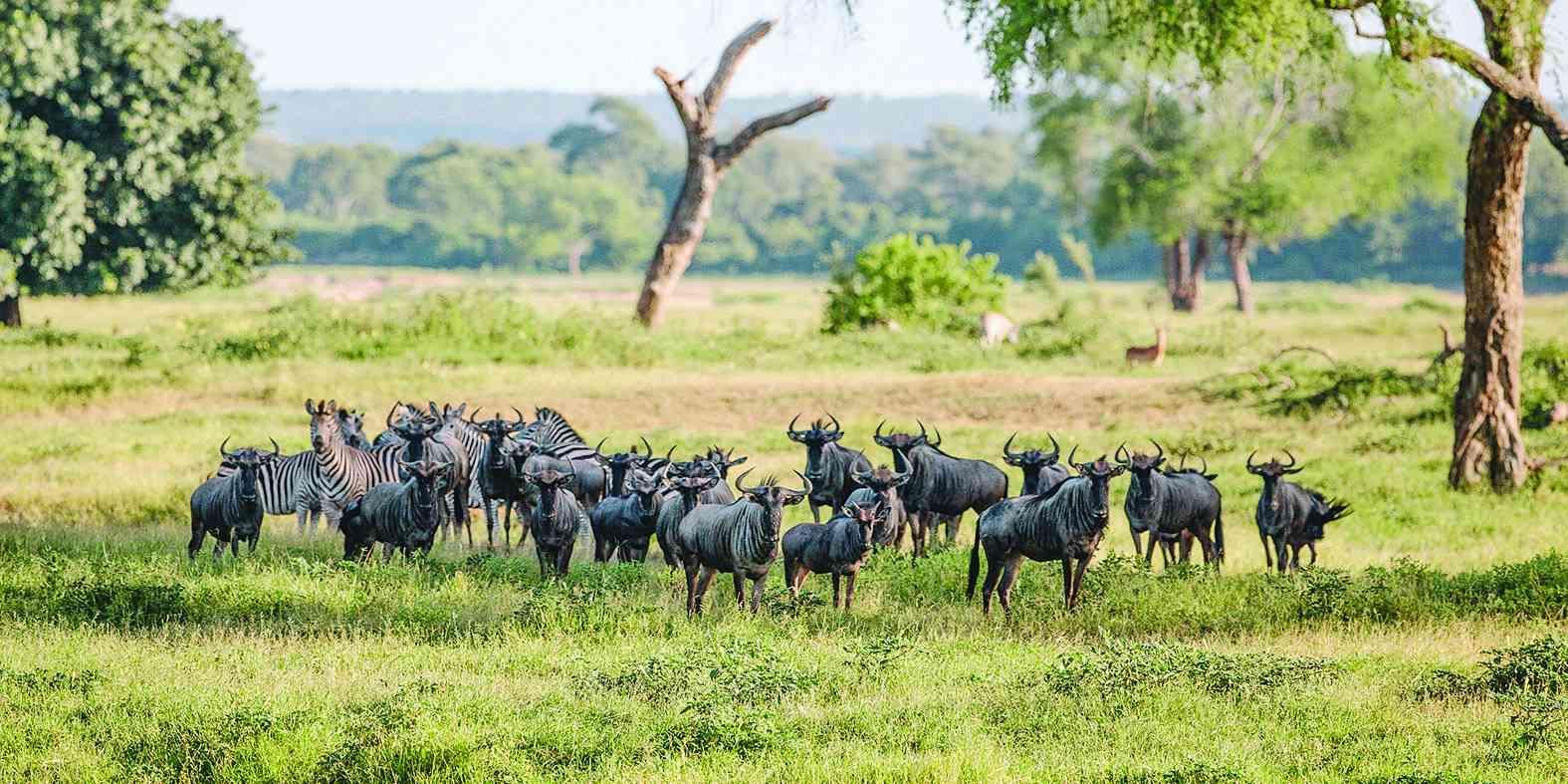By By Tonderayi Matonho
Africa-Press – Nigeria. AS the sun rises over the vast, untamed wilderness of the Kavango-Zambezi Transfrontier Conservation Area (KAZA TFCA), straddling the borders of five southern African nations, the air is thick with the sound of life.
Elephants trumpet in the distance, their mighty frames silhouetted against the golden horizon.
Nearby, a herd of impala bounds gracefully through the tall grasses, unaware of the invisible lines that divide their habitat.
This breath-taking landscape is at the heart of a grand vision — one that seeks to transcend national boundaries in the name of conservation and sustainable development.
TFCAs, like KAZA and the Gonarezhou Trans-frontier Park have been hailed as pioneering approaches to protecting biodiversity and empowering local communities.
However, delving deeper into the realities on the ground, a more complex picture emerges — one of both triumph and trepidation.
Conversations with government officials, development experts and the local people who call these TFCAs home, one uncovers the nuanced and often contentious dynamics at play.
While the promise of TFCAs is undeniable, the path to fulfilling that promise has been anything but smooth, with challenges ranging from bureaucratic hurdles to the displacement of vulnerable communities.
“Transfrontier conservation areas are a critical component of our national development strategy, allowing us to protect our shared natural resources while fostering regional co-operation and economic growth,” said Takunda Mutenga, the director for Zimbabwe’s Transfrontier Conservation Areas Programme.
Navigating this delicate balance between conservation and human welfare, one is struck by the powerful stories that emerge — tales of resilience, sacrifice and the relentless pursuit of a harmonious future where nature and people can thrive side by side.
This in-depth exploration goes through the heart of southern Africa’s TFCAs, revealing the triumphs and tribulations that have shaped their evolution and the lessons they hold for the global conservation movement.
The concept of TFCAs first gained traction in the 1990s as policymakers and conservationists sought to address the limitations of traditional, nationally-bounded protected areas.
Experts note that the idea was simple yet ambitious: by crossing political borders, TFCAs could create vast, interconnected ecosystems that would better safeguard threatened species and habitats.
“TFCAs offer a unique opportunity to protect biodiversity at a regional scale,” explained Nyasha Manatsa, a senior biodiversity specialist at the Southern African Development Community.
“They allow for the coordinated management of shared natural resources, which is crucial in a world where climate change and human activities know no borders, she expounds.”
Indeed, the KAZA TFCA, which spans 520 000 square kilometres across Botswana, Namibia, Angola, Zambia and Zimbabwe, is a prime example of this ambitious vision.
The Gonarezhou Transfrontier Park, covering Mozambique, South Africa and Zimbabwe, is part of the Great Limpopo Transfrontier Conservation Area, which also includes Kruger National Park in South Africa.
By spanning the borders of these three countries, the Gonarezhou Transfrontier Park aims to create a vast, interconnected ecosystem that can better support wildlife conservation and sustainable development initiatives across the region.
By bringing together diverse ecosystems and wildlife populations, the TFCA aims to safeguard the iconic species that have captivated the world’s imagination, from the mighty African elephant to the elusive black rhino.
However, the road to realising this vision has been anything but smooth.
Amos Muzenda, a community leader in Zimbabwe’s Hwange National Park, part of the KAZA TFCA, shared his concerns.
“While the concept of TFCAs is noble, the reality on the ground is often very different,” he lamented.
“Many of us who live in these areas feel like we’ve been left behind, our needs and aspirations overshadowed by the conservation agenda.”
Muzenda’s sentiments are echoed by Thembi Nkosi, a rural development expert based in Mozambique.
“TFCAs have the potential to boost local livelihoods through eco-tourism and sustainable resource management,” she said.
“But all too often, the benefits accrue to national governments and foreign investors, while the communities who have lived on these lands for generations are left to shoulder the costs.”
Indeed, the creation of TFCAs has, in some cases, led to the displacement of indigenous and local communities, as their traditional lands are subsumed into the conservation areas.
This has not only disrupted their way of life but has also eroded their access to critical resources, such as water and grazing land.
“It’s a delicate balance,” acknowledges Manatsa.
“We want to protect biodiversity, but we also have a moral obligation to ensure that the people who call these regions home are not left behind.
“That’s why it’s so important to involve local communities in the planning and management of TFCAs from the very beginning.”
The success stories, however, offer hope.
In Namibia’s Kavango-Zambezi TFCA, for instance, the government has worked closely with community-based organisations to develop innovative eco-tourism initiatives that directly benefit local residents.
By empowering communities to manage and derive income from wildlife-based enterprises, these efforts have not only improved livelihoods but also fostered a greater sense of ownership and stewardship over the land.
“When people have a stake in the success of a TFCA, they become invested in its long-term sustainability,” explains Thabo Mokoena, a wildlife management expert.
“It’s a win-win situation — the environment is protected and local communities thrive.”
As the global conservation movement continues to evolve, the lessons of southern Africa’s TFCAs will undoubtedly shape the way challenges are approached and hence safeguarding the earth’s precious biodiversity.
By striking the right balance between environmental protection and human development, these cross-border initiatives have the potential to not only preserve our natural heritage but also forge a more equitable and peaceful future for all.
Source: NewsDay
For More News And Analysis About Nigeria Follow Africa-Press







